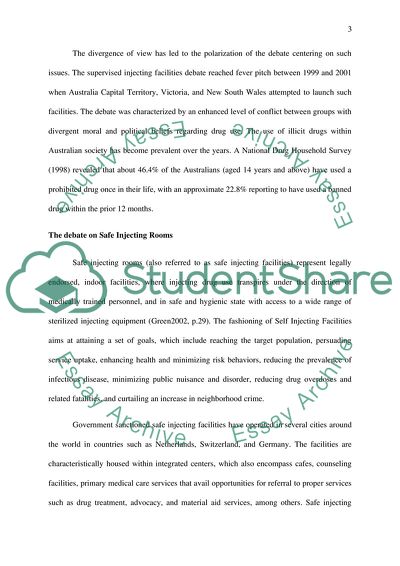Cite this document
(“The implementation of safe injecting rooms within Australian cities is Essay”, n.d.)
The implementation of safe injecting rooms within Australian cities is Essay. Retrieved from https://studentshare.org/nursing/1602040-the-implementation-of-safe-injecting-rooms-within-australian-cities-is-a-controversial-one-discuss-the-health-care-arguments-for-and-against-the-implementation-of-these-rooms
The implementation of safe injecting rooms within Australian cities is Essay. Retrieved from https://studentshare.org/nursing/1602040-the-implementation-of-safe-injecting-rooms-within-australian-cities-is-a-controversial-one-discuss-the-health-care-arguments-for-and-against-the-implementation-of-these-rooms
(The Implementation of Safe Injecting Rooms Within Australian Cities Is Essay)
The Implementation of Safe Injecting Rooms Within Australian Cities Is Essay. https://studentshare.org/nursing/1602040-the-implementation-of-safe-injecting-rooms-within-australian-cities-is-a-controversial-one-discuss-the-health-care-arguments-for-and-against-the-implementation-of-these-rooms.
The Implementation of Safe Injecting Rooms Within Australian Cities Is Essay. https://studentshare.org/nursing/1602040-the-implementation-of-safe-injecting-rooms-within-australian-cities-is-a-controversial-one-discuss-the-health-care-arguments-for-and-against-the-implementation-of-these-rooms.
“The Implementation of Safe Injecting Rooms Within Australian Cities Is Essay”, n.d. https://studentshare.org/nursing/1602040-the-implementation-of-safe-injecting-rooms-within-australian-cities-is-a-controversial-one-discuss-the-health-care-arguments-for-and-against-the-implementation-of-these-rooms.


